Irene Levin: A Woman, A WAVE
Minneapolis native Irene Levin chose to join the United States Navy's Women Accepted for Volunteer Emergency Services (WAVES) when her husband, Sid, was shipped overseas in 1944. Irene's grandson, Andy Cook, interviewed her and wrote about her experiences as a WAVE. The following is an excerpt.
Story Excerpt
Irene Levin's World War II experience became very personal in 1942 when her husband of only five months, Sid, was drafted. On August 15th, 1942 Sid shipped out from Fort Snelling in Saint Paul, Minnesota, for Camp Barkley in Texas for basic training.
After basic training, Sid was sent to Fort Bliss, also in Texas, and Irene took the train down to meet him there and reunite with her husband. While at Fort Bliss, Sid was accepted into Officers Training School and in February of 1943 he entered the engineering school for officers at Camp Pickett in Virginia. Once again, Irene and Sid were forced to part ways; when Sid shipped out for Virginia, Irene headed back to her family in Minneapolis.
While Sid was in Officers Training School, Irene took a job as a bookkeeper at Applebaum Market in Saint Paul, which was a big grocery business then. During this time, Sid realized that he was not well suited for engineering and did not finish Officers Training School. He was instead sent to Fort Bragg in North Carolina. Here Irene and Sid got the chance to see each other again as she quit her job at the market and took the train to North Carolina, meeting Sid at Fort Bragg. This was a happy moment; however, Irene knew Sid would be departing again soon. "Fort Bragg was a sort of staging place. When you went there, you knew you were going overseas," she said.
While at Fort Bragg, tragedy struck Irene as her brother Lester, a fighter pilot, was killed. While flying over occupied France on August 31st, 1942, he was struck by enemy fire. He was first declared missing in action, but on Thanksgiving Day at Fort Bragg, Irene and Sid received a telegram informing them of his death. Irene never got over the death of her brother.
On February 15, 1943, the day finally came as Sid shipped out for Europe on the Queen Mary.
After Sid shipped out, Irene headed back for Minneapolis. On the way, however, she made a decision that would change her war experience. While on a stop in Atlanta, Irene decided to join the Navy. "We had talked about it and he thought it was a good idea." After enlisting, Irene got a letter from Sid saying he would rather she did not join the Navy, but by this time Irene was already a WAVE.
Upon joining the Navy, Irene went for a physical and received orders to report to the Milwaukee Depot in Minneapolis in June of 1943. From there, she and other women who had joined the WAVES program took a train to New York City. They were stationed at Hunter College in the Bronx - the whole campus had been turned over to the Navy. They lived in the dorms, which were little apartments. When the women first arrived at Hunter College, they had another physical, and anyone who did not pass was sent home. Following their physicals, Irene and the other women were issued their uniforms. Irene started her Navy career as a Seaman, 3rd class. She was now part of the war effort in a way very unique way. While at Hunter, Irene and the other WAVES took all kinds of classes, including sociology, history and geography - "a lot of geography," Irene commented. The women also spent much time learning the history of the Navy and how the Navy functioned. After three months of such classes, the WAVES took tests to determine what type of work each woman was best suited for. Irene was assigned to Yeoman training, by this time having risen in rank to Seaman 1st Class.
Irene now traveled to Stillwater, Oklahoma and the campus of Oklahoma A&M. She recalled, "It was a beautiful campus." On that beautiful campus, however, the reality of war struck Irene again. While training in a paratrooper unit, Irene's brother Harold lost his life when the plane he was training in exploded, killing the men inside. Irene received an emergency furlough to go back to Minneapolis for the funeral. Not only was the death of her brother traumatic, but this was also the first time Irene traveled alone in uniform - up to this point she had always traveled with other WAVES. "I was scared," Irene remarked. "A lot of people were prejudiced and didn't think women should be in the service. People thought they should be back home making bullets. This was before women were recognized and appreciated in the workplace." Irene commented how many women went to work in the munitions plants rather than joining the service. "They were paying $60 a week and we thought that was a lot of money. Many Americans did not approve of women in the military. Now they do, but they didn’t then."
After the funeral, Nana went back to Oklahoma to resume training. She completed the Yeoman training in Oklahoma in the late summer of 1944, and following the completion of required naval training at Oklahoma A&M, she was sent to the US Naval Station near Astoria, Oregon. By this time she was a 3rd class Yeoman and was assigned to interview officers coming off the various ships and mimeograph the orders for their next assignment.
Irene and the other WAVES also had the job of standing watch over the women's barracks. Each woman was required to do this twice a month, which entailed remaining on base and being responsible for the return of all of the women from her barrack on time. If the women failed to get back to base on time, they would be issued infractions which included washing and cleaning the barracks windows and floors. Irene recalled such a night when one of her WAVES did not return on time. As it turned out, the woman had broken her leg, but not knowing this at the time Irene reported her late to the base. After discovering what had happened, an ambulance was sent for the woman. Despite her injury, she was subsequently penalized, and Irene remembers watching that woman wash the windows of the barracks. Irene also noted that had she not reported the woman, she would have been penalized.
While Irene was stationed in Astoria, Washington, Sid and his unit were sent to Nancy, France, near the fighting at Utah and Omaha Beaches. He was not allowed to write to Irene and tell her they were moving - or even if they were moving at all. Irene and Sid had been writing each other everyday throughout the war, and the sudden end of mail worried her. She had already lost two brothers in the war, and momentarily feared the worst. Her worries subsided, however, when she heard talk that his unit was being moved, and after ten days without a letter Irene and Sid were in communication again.
Irene received an honorable discharge from the Navy in November of 1945. Following her discharge, Irene traveled to Portland, Oregon - her mother, sister, aunts, and an uncle were living there - but soon after returned to Minneapolis awaiting Sid's return. Though the men coming back from the service received a hero's welcome, no such appreciation existed for women who had been in the service. Irene recalls that civilians were very proud of the men, but offered no praise to women like her. Rather, they constantly questioned why she joined the service instead of going into the factories to work or simply staying at home. Irene responded to these questions very frankly, however: "I did it because I didn't know when I would see Sid again."
Unfortunately, when women like Irene returned to civilian life from the service their efforts were hardly recognized, and the transition from servicewoman to civilian woman was not always easy. Irene did not experience such a difficult transition, though. She commented, "Once you took the uniform off you were just another civilian…it was like I'd been on a trip."
After the war, Sid and Irene did as most veterans did and settled down to raise a family. Both Sid and Irene attended college under the GI Bill, and Sid became a lawyer. They had three children, lived in the Minneapolis suburbs, and were married for sixty-two years.
After the war, Irene did not talk much about having been a WAVE. She said that in the years immediately following her service, it did not seem important. As time has gone on, however, she has come to realize and appreciate what she accomplished. "The older I get, the more proud I become," she said.
Recognition finally came for Irene and the other women who served the military with the Women's Memorial at Arlington National Cemetery. Sid, in fact, registered Irene for this, and her name can be found there. When the Women in Military Service for America Memorial was officially unveiled in 1997, national recognition became not only a reality but a tangible part of American history.
The memorial, as the Women in Military Service for America Memorial Organization states, "honors all the women who have served courageously, selflessly and with dedication in times of conflict and in times of peace - women whose achievements have for too long been unrecognized or ignored." Now that their recognition has come, we can further appreciate the service and commitment women like Irene made, and with the memorial their service will be honored forever.
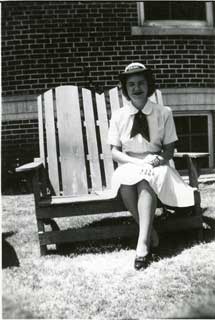
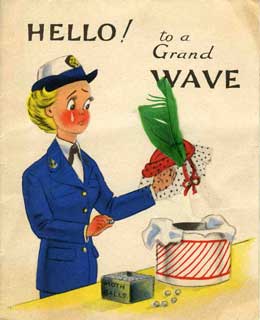
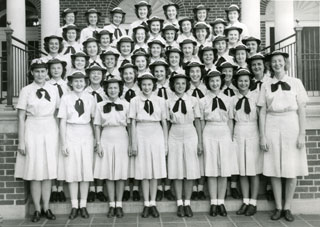


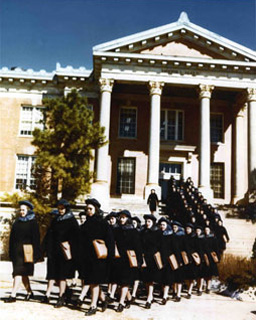
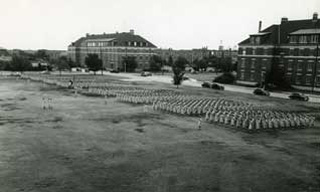
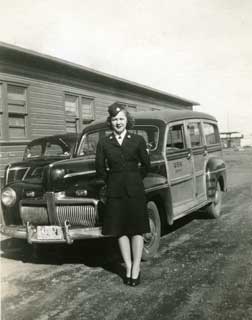
Source
Cook, Andy, A Woman, A WAVE. Minnesota Historical Society: Share Your Story, 2007.


